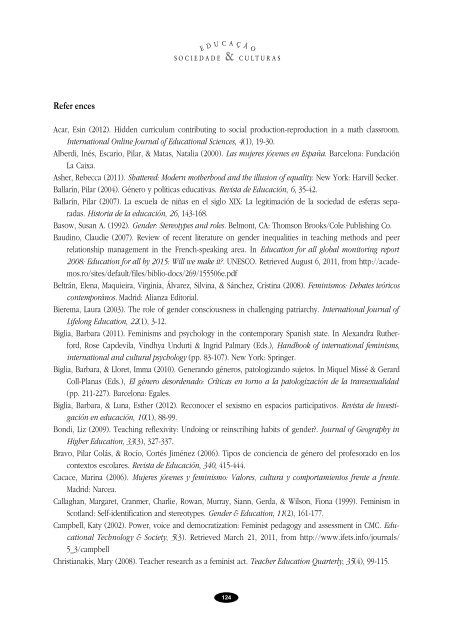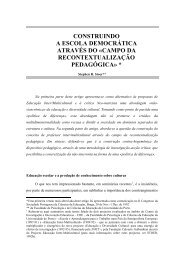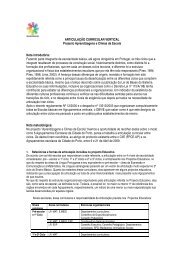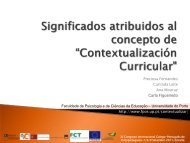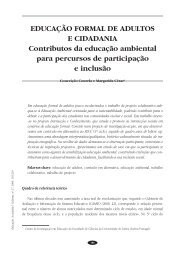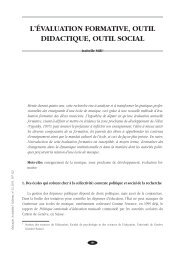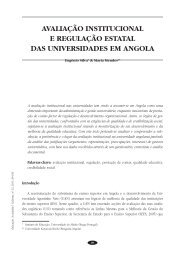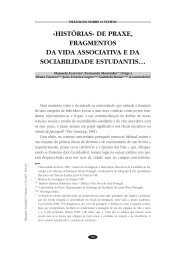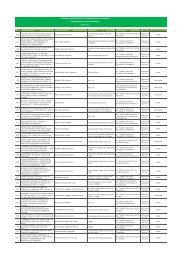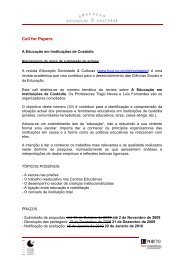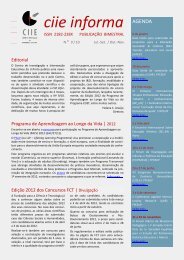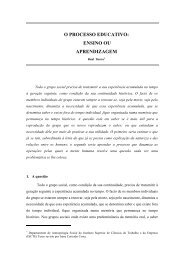REFLECTINGON AN ACADEMIC PRACTICE TOBOOST GENDER ...
REFLECTINGON AN ACADEMIC PRACTICE TOBOOST GENDER ...
REFLECTINGON AN ACADEMIC PRACTICE TOBOOST GENDER ...
You also want an ePaper? Increase the reach of your titles
YUMPU automatically turns print PDFs into web optimized ePapers that Google loves.
Refer encesAcar, Esin (2012). Hidden curriculum contributing to social production-reproduction in a math classroom.International Online Journal of Educational Sciences, 4(1), 19-30.Alberdi, Inés, Escario, Pilar, & Matas, Natalia (2000). Las mujeres jóvenes en España. Barcelona: FundaciónLa Caixa.Asher, Rebecca (2011). Shattered: Modern motherhood and the illusion of equality. New York: Harvill Secker.Ballarín, Pilar (2004). Género y políticas educativas. Revista de Educación, 6, 35-42.Ballarín, Pilar (2007). La escuela de niñas en el siglo XIX: La legitimación de la sociedad de esferas separadas.Historia de la educación, 26, 143-168.Basow, Susan A. (1992). Gender: Stereotypes and roles. Belmont, CA: Thomson Brooks/Cole Publishing Co.Baudino, Claudie (2007). Review of recent literature on gender inequalities in teaching methods and peerrelationship management in the French-speaking area. In Education for all global monitoring report2008: Education for all by 2015: Will we make it?. UNESCO. Retrieved August 6, 2011, from http://academos.ro/sites/default/files/biblio-docs/269/155506e.pdfBeltrán, Elena, Maquieira, Virginia, Álvarez, Silvina, & Sánchez, Cristina (2008). Feminismos: Debates teóricoscontemporános. Madrid: Alianza Editorial.Bierema, Laura (2003). The role of gender consciousness in challenging patriarchy. International Journal ofLifelong Education, 22(1), 3-12.Biglia, Barbara (2011). Feminisms and psychology in the contemporary Spanish state. In Alexandra Rutherford,Rose Capdevila, Vindhya Undurti & Ingrid Palmary (Eds.), Handbook of international feminisms,international and cultural psychology (pp. 83-107). New York: Springer.Biglia, Barbara, & Lloret, Imma (2010). Generando géneros, patologizando sujetos. In Miquel Missé & GerardColl-Planas (Eds.), El género desordenado: Críticas en torno a la patologización de la transexualidad(pp. 211-227). Barcelona: Egales.Biglia, Barbara, & Luna, Esther (2012). Reconocer el sexismo en espacios participativos. Revista de Investigaciónen educación, 10(1), 88-99.Bondi, Liz (2009). Teaching reflexivity: Undoing or reinscribing habits of gender?. Journal of Geography inHigher Education, 33(3), 327-337.Bravo, Pilar Colás, & Rocío, Cortés Jiménez (2006). Tipos de conciencia de género del profesorado en loscontextos escolares. Revista de Educación, 340, 415-444.Cacace, Marina (2006). Mujeres jóvenes y feminismo: Valores, cultura y comportamientos frente a frente.Madrid: Narcea.Callaghan, Margaret, Cranmer, Charlie, Rowan, Murray, Siann, Gerda, & Wilson, Fiona (1999). Feminism inScotland: Self-identification and stereotypes. Gender & Education, 11(2), 161-177.Campbell, Katy (2002). Power, voice and democratization: Feminist pedagogy and assessment in CMC. EducationalTechnology & Society, 5(3). Retrieved March 21, 2011, from http://www.ifets.info/journals/5_3/campbellChristianakis, Mary (2008). Teacher research as a feminist act. Teacher Education Quarterly, 35(4), 99-115.124


